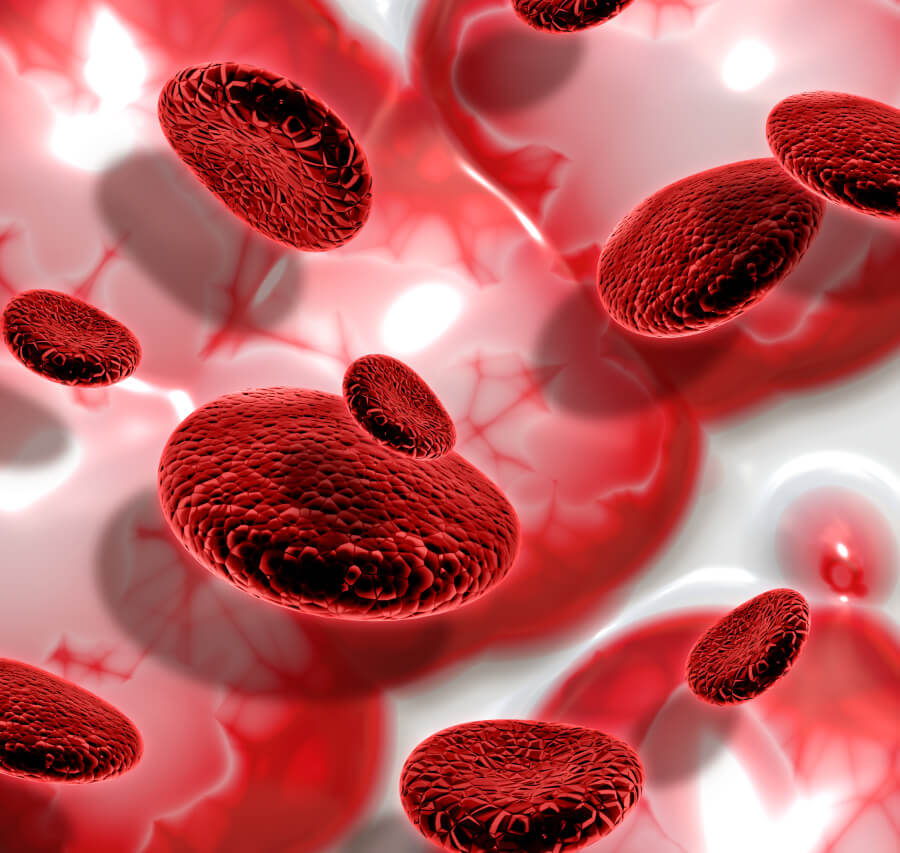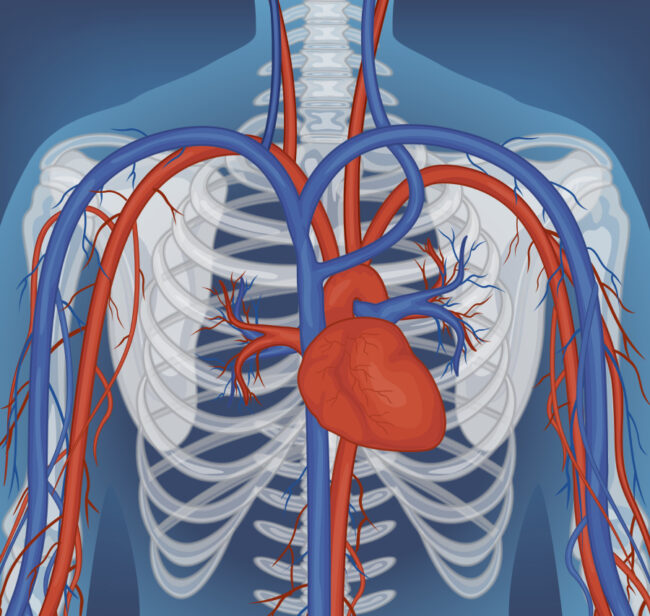In the intricate web of our physiology, blood cells serve as the silent warriors, carrying out essential tasks that keep our bodies functioning smoothly.
However, sometimes, this finely tuned system can falter, leading to various blood cell disorders.
In this blog, we embark on a journey to unravel the mysteries surrounding these disorders, exploring their symptoms, types, and underlying causes.
Prepare to delve into the fascinating realm of hematological anomalies, where every discovery brings us closer to understanding the intricate dance of life within us.
Our bodies hum with an internal orchestra, each cell playing a vital role in the grand performance of life.
Among these musicians are the unsung heroes – the blood cells. Red, white, and platelets, they dance through our veins, delivering oxygen, fighting infections, and sealing wounds.
But what happens when the music falters?
When blood cell disorders disrupt the harmony, our health can face a discordant melody.
Delving into the Microworld:
Before delving into the complexities of blood cell disorders, let’s take a moment to appreciate the marvels of hematopoiesis—the process through which blood cells are formed.
Within the bone marrow, a bustling factory nestled deep within our bones, stem cells undergo a remarkable transformation, giving rise to three main types of blood cells: red blood cells (erythrocytes), white blood cells (leukocytes), and platelets (thrombocytes).
Blood cells are born in the bone marrow, a factory churning out millions every second. Each type has a specific function:
- Red blood cells (RBCs): These oxygen-carrying champions ferry life-giving gas from the lungs to every nook and cranny of your body. Think of them as tiny taxis, delivering essential fuel for cellular power.
- White blood cells (WBCs): Our immune system’s soldiers, they tirelessly battle invaders like bacteria and viruses. Imagine them as valiant knights, safeguarding the kingdom from foreign threats.
- Platelets: These sticky patches are the body’s first responders at injury sites. They clump together, forming a clot to stem the bleeding and initiate healing, acting like construction workers patching up a leaky dam.
When the Melody Goes Off-Key:
Blood cell disorders arise when something disrupts their production, function, or lifespan.
This can lead to a variety of symptoms, depending on the affected cell type and severity of the disorder.
Here are some common culprits:
Red blood cell disorders:
Anemia: The most common blood disorder, characterized by a deficiency in red blood cells or hemoglobin, the oxygen-carrying protein within them.
This translates to fatigue, shortness of breath, and pale skin – your internal taxis are running low on fuel.
Sickle cell anemia: An inherited disorder where abnormal RBCs become crescent-shaped, causing blockages in blood vessels and excruciating pain – imagine tiny roadblocks hindering oxygen delivery.
Thalassemia: Another genetic condition that reduces hemoglobin production, leading to anemia symptoms – a malfunction in the taxi factory itself.
White blood cell disorders:
Leukemia: Cancer of the WBCs, where they multiply uncontrollably. This disrupts their ability to fight infections and can cause fatigue, fever, and easy bruising – an army in chaos, unable to defend the kingdom.
Lymphoma: Cancer of the lymphatic system, which houses WBCs. Symptoms vary depending on the type, but may include swollen lymph nodes, fatigue, and night sweats – the immune system’s fortresses under siege.
Platelet disorders:
Hemophilia: A genetic bleeding disorder where the blood lacks sufficient clotting factors. This leads to prolonged bleeding after injuries – the construction workers lack the proper materials to patch the dam.
Idiopathic thrombocytopenic purpura (ITP): An autoimmune disorder where the body attacks its own platelets, causing easy bruising and bleeding – friendly fire within the construction crew.
Decoding Blood Cell Disorders
Now that we’ve laid the foundation, let’s explore the intricate tapestry of blood cell disorders, each presenting its own set of challenges and manifestations.
Anemia:
– Symptoms: Fatigue, weakness, pale skin, shortness of breath, dizziness.
– Types: Iron-deficiency anemia, vitamin deficiency anemia, sickle cell anemia, aplastic anemia.
– Causes: Insufficient iron intake, vitamin deficiencies, genetic mutations, bone marrow failure.
Leukemia:
– Symptoms: Frequent infections, fever, fatigue, unexplained weight loss, easy bruising or bleeding.
– Types: Acute lymphoblastic leukemia (ALL), acute myeloid leukemia (AML), chronic lymphocytic leukemia (CLL), chronic myeloid leukemia (CML).
– Causes: Genetic mutations, exposure to radiation or certain chemicals, viral infections.
Thrombocytopenia:
– Symptoms: Easy bruising, prolonged bleeding from cuts, petechiae (small red or purple spots on the skin).
– Types: Immune thrombocytopenia (ITP), drug-induced thrombocytopenia, thrombotic thrombocytopenic purpura (TTP).
– Causes: Immune system disorders, medications, infections, autoimmune diseases.
Section 3: Unveiling the Underlying Causes
Behind every blood cell disorder lies a complex interplay of genetic predispositions, environmental factors, and physiological anomalies. Let’s shed light on some of the underlying causes driving these conditions.
Genetic Mutations:
– Inherited genetic mutations can disrupt the normal development and function of blood cells, predisposing individuals to disorders such as sickle cell anemia and thalassemia.
Environmental Factors:
– Exposure to certain environmental toxins, such as benzene and radiation, can increase the risk of developing leukemia and other blood-related malignancies.
Immune Dysregulation:
– Disorders of the immune system, such as autoimmune diseases and immune deficiencies, can lead to aberrant immune responses against blood cells, resulting in conditions like autoimmune hemolytic anemia and immune thrombocytopenia.
Beyond the Usual Suspects:
While genetics play a role in some blood cell disorders, others arise from environmental factors like:
- Nutritional deficiencies: Iron, vitamin B12, and folate are crucial for healthy blood cell production. Deficiencies can lead to anemia.
- Infections: Certain viruses and bacteria can damage bone marrow or directly affect blood cells.
- Autoimmune diseases: When the immune system mistakenly attacks healthy tissues, it can target blood cells.
- Exposure to toxins: Chemicals like benzene can damage bone marrow and blood cells.
Early Diagnosis and Treatment:
Early diagnosis and treatment are crucial for managing blood cell disorders effectively.
Be mindful of these warning signs:
- Persistent fatigue
- Pale skin
- Easy bruising or bleeding
- Frequent infections
- Fever
- Swollen lymph nodes
- Shortness of breath
- Unexplained weight loss
A Symphony of Support:
If you experience any of these symptoms, consult your doctor for prompt diagnosis and personalized treatment.
Depending on the specific disorder, treatment options may include:
- Medications: To stimulate blood cell production, suppress the immune system, or prevent blood clots.
- Blood transfusions: To replenish red blood cells in cases of severe anemia.
- Stem cell transplantation: In severe cases, replacing damaged bone marrow with healthy stem cells.
- Lifestyle changes: Maintaining a healthy diet, getting enough sleep, and avoiding harmful substances can support overall health and potentially improve blood cell production.
Conclusion
Remember, you are the conductor of your own health orchestra.
By understanding the delicate dance of your blood cells and recognizing the signs of discord, you can work with your doctor to maintain a beautiful symphony of well-being.
FAQs
What are the common symptoms of blood cell disorders?
Common symptoms of blood cell disorders include fatigue, weakness, pale skin, shortness of breath, frequent infections, easy bruising or bleeding, unexplained weight loss, and petechiae (small red or purple spots on the skin).
The specific symptoms can vary depending on the type of disorder and its severity.
How many types of blood cell disorders are there, and what are they?
There are several types of blood cell disorders, each with its own distinct characteristics.
Some common types include anemia (such as iron-deficiency anemia, sickle cell anemia), leukemia (acute lymphoblastic leukemia, chronic myeloid leukemia), thrombocytopenia (immune thrombocytopenia, thrombotic thrombocytopenic purpura), and hemophilia.
These disorders can affect red blood cells, white blood cells, or platelets, leading to various symptoms and complications.
What are the main causes of blood cell disorders?
Blood cell disorders can have multiple causes, including genetic mutations, environmental factors, and immune dysregulation.
Genetic mutations can predispose individuals to certain disorders like sickle cell anemia, while exposure to toxins, radiation, or certain medications can increase the risk of developing conditions like leukemia and thrombocytopenia.
Immune dysregulation, such as autoimmune diseases, can also lead to disorders where the immune system attacks blood cells.
Can blood cell disorders be inherited?
Yes, some blood cell disorders can be inherited through genetic mutations passed down from parents to their children.
Examples include sickle cell anemia, thalassemia, and hemophilia.
Inherited disorders often manifest early in life and may require lifelong management and treatment.
How are blood cell disorders diagnosed?
Diagnosis of blood cell disorders typically involves a combination of medical history review, physical examination, laboratory tests (such as complete blood count, blood smear, and bone marrow biopsy), and imaging studies (such as ultrasound or MRI).
These diagnostic tools help healthcare providers identify abnormalities in blood cell counts, morphology, and function, leading to an accurate diagnosis.
What treatments are available for blood cell disorders?
Treatment for blood cell disorders depends on the specific type and severity of the condition.
It may include medications (such as iron supplements, chemotherapy, or immunosuppressive drugs), blood transfusions, bone marrow transplants, and supportive therapies (such as physical therapy or genetic counseling).
The goal of treatment is to manage symptoms, prevent complications, and improve overall quality of life for individuals with blood cell disorders.





